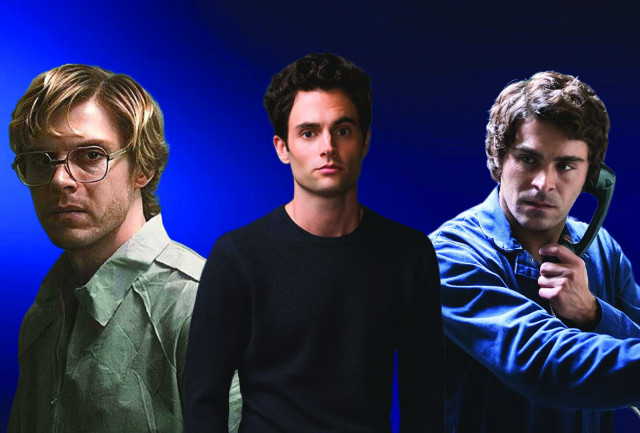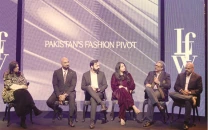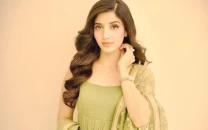Why women love the wicked
Taking advantage of their appeal, entertainment has perfected the art of the villain

Karachi
From the suave, brooding anti-heroes to the maniacal masterminds, there's something undeniably magnetic about villains. For decades, audiences, especially women, have found themselves irresistibly drawn to these dark, dangerous figures - not at all helped by the entertainment industry taking advantage of the appeal of good-looking villains, amplifying the already blurred line between danger and desire.
With the rise of morally complex characters, studios have increasingly recognised that audiences - particularly women - are drawn to villains who are both physically attractive and emotionally layered. This shift has led to a deliberate sexualisation of villains, casting heartthrob actors in roles that explore dark, twisted personalities. What began as a subtle fascination with the psychological depth of antagonists has now evolved into a calculated strategy.
A calculated move
This trend extends beyond fiction and into real-life portrayals of criminals, a disturbing shift in how the film and television industries repackage danger as desire. Casting heartthrobs like Zac Efron as Ted Bundy and Evan Peters as Jeffrey Dahmer blurs the lines even further, turning notorious killers into objects of fascination, if not fantasy. By putting attractive actors in these roles, Hollywood draws women into complex feelings of empathy and attraction. It's a fine line, but it works - audiences end up not just remembering the crimes but also romanticising the people who committed them, often focusing on the actor's charm rather than the monstrosity they're portraying.
They know exactly what they're doing. Casting popular, attractive actors as villains has become a reliable formula, making these roles more palatable and even desirable to viewers. Joe Goldberg from You is undeniably creepy - a stalker, manipulator, and murderer with a penchant for rationalising his toxic behaviour. Yet, many women find him disturbingly attractive. What makes him appealing lies not just in his looks but in how he embodies a twisted fantasy. Joe's obsession is framed as love, a deep, all-consuming devotion that some find intoxicating, particularly in a world where emotional unavailability is rampant. His intellect, introspective monologues, and perceived vulnerability give him a romantic anti-hero aura, despite his horrifying actions. His sinister charm, along with Penn Badgley's portrayal, leaves viewers questioning their attraction while simultaneously being repelled by his behaviour. The push-and-pull dynamic Joe creates amplifies the unsettling hold he has over viewers. His actions continuously teeter between affectionate and abhorrent, keeping women emotionally hooked.
The allure of real-life rogues
This phenomenon reaches its most unsettling form when real-life criminals are cast in the same mould. The decision to have Efron, known for his heartthrob status, play Bundy - the serial killer who preyed on young women - is part of a wider cultural trend where the lines between horror and fascination are intentionally muddled. Efron's inherent charm complicates the portrayal, making it difficult for viewers to separate the actor from the monster. The audience's empathy for Efron and his basketball dribbling High School Musical days bleeds into their understanding of Bundy.
Peters' casting as Dahmer is another example of this, where an actor with a loyal fanbase plays a notorious killer responsible for unspeakable acts. Despite Dahmer's gruesome crimes, Peters' portrayal attracted an outpouring of attention, with some women expressing fascination for the character on social media. This raises ethical questions about whether Hollywood is unintentionally - or intentionally - glamorising violence by casting such figures as alluring rather than grotesque.
The pull of these portrayals ties into the allure of power and danger. Villains operate outside the boundaries of societal norms, wielding control in a way that challenges conventional ideas of morality and safety. For many women, the appeal lies in this dynamic: villains break the rules and exert dominance, offering a fantasy of rebellion that is starkly different from the traditional roles women are often expected to fill.
There's also a psychological element at play - fear and excitement are closely linked emotions, and studies have shown that adrenaline can be misinterpreted as attraction. Women may find themselves drawn to morally grey figures because the thrill of engaging with someone dangerous can trigger feelings that are mistaken for romantic attraction. This attraction is often more about the psychological rush than the actual crimes. When women engage with these characters, they are not aligning themselves with actual danger or moral compromise, but instead exploring a side of their personality that is rarely permitted in daily life.
The enduring trope of the "bad boy" also plays a key role in this dynamic. Many women are drawn to the idea of redeeming or "fixing" someone who is deeply flawed or broken, often seeing themselves as the one person who can heal or understand them. This taps into a broader cultural narrative where women are encouraged to nurture and care for those who are emotionally wounded, further complicating the relationship between attraction and morality.
Sinister for the sake of it
In many modern portrayals, villains aren't simply evil for the sake of being evil. They are often given depth, backstories, and motives that invite empathy. Maleficent, from the eponymous film, is a great example of this. Once depicted as a one-dimensional villain in Disney's Sleeping Beauty, her character was reimagined to show the emotional pain and betrayal that shaped her into the antagonist we see. This layering of complexity makes her far more relatable and, in turn, far more attractive.
Women are not merely attracted to the villain's dangerous edge, but also to the emotional vulnerability that often lies beneath. Many villains possess a tragic backstory, one that explains their descent into darkness. This vulnerability humanises them and allows viewers to empathise with their struggles, even if they can't condone their actions.



















COMMENTS
Comments are moderated and generally will be posted if they are on-topic and not abusive.
For more information, please see our Comments FAQ